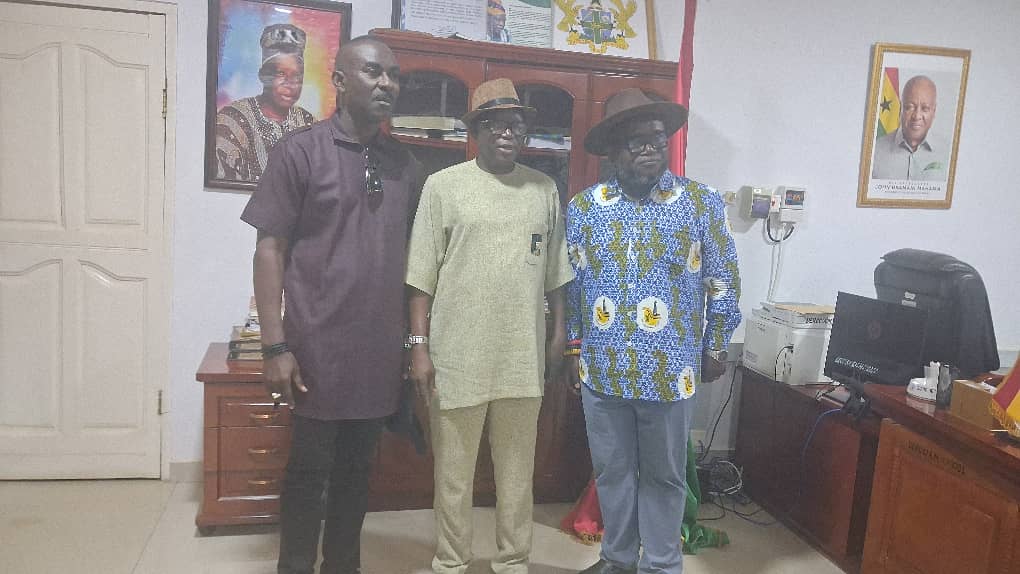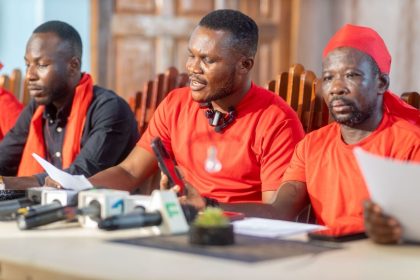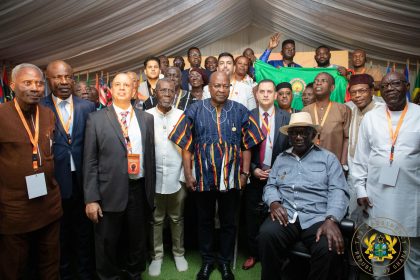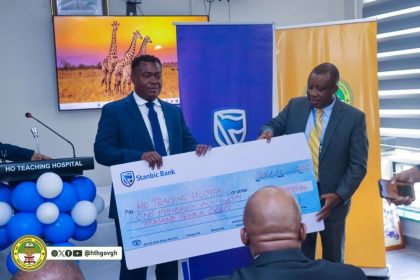The Ghana Chamber of Mines has called on leaders and communities in the Upper East Region to take full advantage of the emerging gold mining opportunities to accelerate local development, create jobs and attract major investments into the area.
The call was made when a delegation from the Chamber, led by its Chief Executive Officer, Dr Ken Ashigbey, paid a courtesy call on Mr Donatus Atanga Akamugri, the Upper East Regional Minister in Bolgatanga as part of a working visit to Cardinal Namdini Mining Ltd (CNML), a member of the Chamber.
The visit was part of the Chamber’s efforts to introduce the Purple Peach project; an initiative aimed at improving menstrual hygiene among girls and reducing absenteeism in schools due to lack of sanitary pads by donating sanitary pads to some schools in the Talensi District.
Dr Ashigbey said the presence of a large-scale, responsible mine such as CNML had already begun transforming the landscape of the region, noting that the mine’s investments, job creation, and contribution to national revenue were clear indicators of the development potential the mineral-rich region held.
He explained that for decades, large-scale mining had been concentrated in southern Ghana, but the rapid growth of industrial mining in the north, particularly in the Upper East and Upper West Regions, was reversing that trend.
“Cardinal Namdini has already invested about US$500 million in constructing the mine, and they are contributing significantly to the Bank of Ghana’s gold reserve, stabilising the economy and improving livelihoods,” he said.
He said Ghana’s natural resources belonged to the people, and where mining was done responsibly, communities stood to benefit immensely through jobs, royalties, local business development, and improved infrastructure.
The CEO revealed that CNML alone was demanding up to 50 megawatts of power, stressing that the region was now positioned to attract major industries, provided the government expanded power infrastructure in the north.
“Our Northern sector is ready for big industries. There is already a demand for 50 megawatts, and another mine is coming up in Wa. This proves that power projects must not remain only in the South,” he stressed.
On prospecting, Dr Ashigbey noted that communities were resistant in realising their lands for mineral prospecting, describing it as a major challenge and appealed to the Regional Minister to intervene.
He emphasised that prospecting was not mining, but a necessary scientific process to determine the region’s long-term mining potential, reiterating the Chamber’s commitment to promoting responsible mining practices that protect the environment, respect communities, and contribute meaningfully to local economies.
Dr Ashigbey reaffirmed that the Chamber would continue working with government, traditional leaders, and host communities to ensure that mining becomes a true catalyst for regional transformation.
“Life without mining is impossible, but it must be responsible mining. With the right support, the Upper East Region can become a hub of growth, opportunity, and sustainable development,” he said.
On his part, the Regional Minister thanked the Chamber for extending its engagement to the region and said mining was still new to Upper East, making education and collaboration essential.

The Minister disclosed that eight out of the 15 Municipalities and districts across the region have confirmed gold deposits, making responsible mining a key pathway to regional transformation.
“If we are able to explore these resources responsibly, give us the next 10 years and Upper East will be the Dubai of Ghana. We only need responsible companies that will not pollute the environment or attract negative social vices,” he added.
He commended CNML for its investments and cooperation so far, noting that although the mine was located away from major road corridors, the transformation at the site is “massive and impressive.”
GNA






